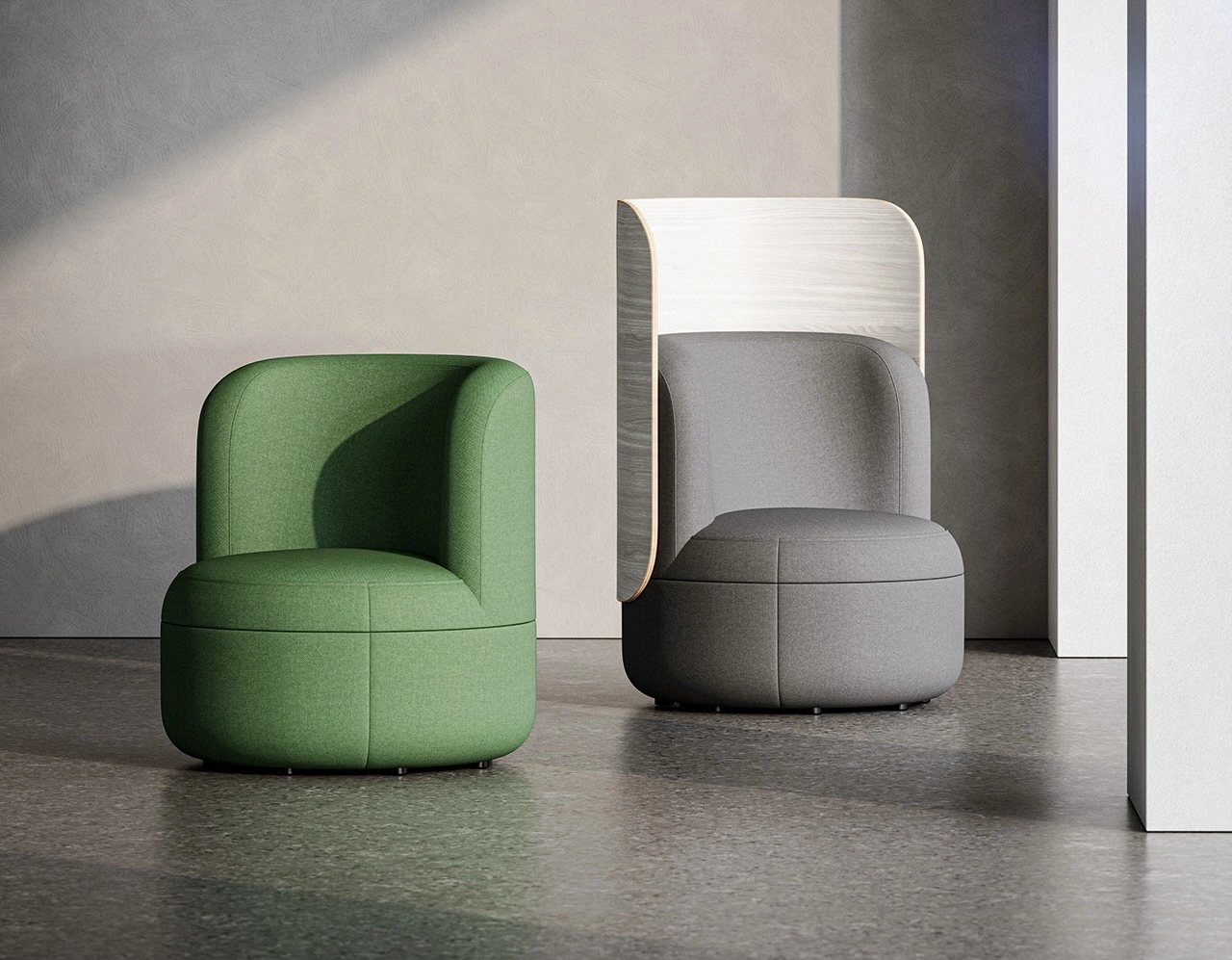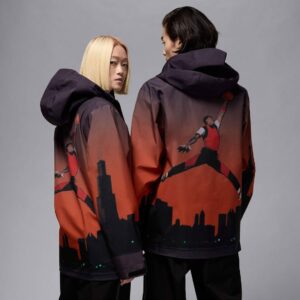In the constellation of 20th-century design, few pieces have managed to blend radical commentary with uncompromising aesthetic appeal as successfully as Gaetano Pesce’s Serie UP. Among them, the UP5_6 — a voluptuous, sensuous armchair paired with an evocative spherical ottoman — stands out as an enduring icon. First unveiled in 1969, this creation remains astonishingly relevant, reissued in 2000 as the Serie UP 2000 by B&B Italia, now clad in its characteristic red jersey fabric.
The birth of a radical icon
The late 1960s were a period of social upheaval and fierce questioning of established norms. Italy, much like the rest of the Western world, was in the throes of cultural revolution. Young people took to the streets, challenging authority and advocating for liberation in various spheres — including design. In this context, Gaetano Pesce, a provocative figure known for his unorthodox approaches, introduced the UP series.
Pesce envisioned furniture not as static, purely functional objects but as dynamic, emotive artifacts that could engage with social issues. The UP5_6 was a direct reflection of his philosophy. Its soft, anthropomorphic form suggests a maternal figure or a fertility goddess — but with a twist. Attached to the armchair by a cord is a spherical ottoman, a potent metaphor resembling a ball and chain. This juxtaposition signified the persistent oppression and constraints historically imposed on women, even as they were celebrated in certain symbolic or aesthetic contexts.
Material innovation and B&B Italia’s role
B&B Italia’s flow with Pesce was crucial in realizing this ambitious project. Known for its cutting-edge experimentation with materials, B&B Italia pioneered the use of cold polyurethane foam injection molding. This technique enabled the seamless production of organic shapes that would have been nearly impossible with traditional upholstery methods.
Wrapped in a stretchable jersey fabric, the UP5_6 not only pushed technological boundaries but also offered an unexpected tactile experience. The red jersey became its emblematic skin, underscoring both sensuality and vulnerability. The bright, almost visceral color palette gave the piece an unmistakable presence in any space — a bold assertion rather than a polite suggestion.
Anthropomorphism as provocation
The anthropomorphic silhouette of the UP5_6 is its most distinctive characteristic. The exaggerated curves and exaggerated proportions evoke the image of ancient Venus figurines, symbolic of fertility and femininity throughout history. But Pesce’s reinterpretation subverted these archetypes, transforming them into a critique of patriarchal constructs.
At a time when feminist movements were gaining momentum globally, Pesce’s design acted as a sharp commentary on the dichotomy between idealized representations of women and their real-life subjugation. The ottoman, tethered to the chair, is not merely a footrest but a stark reminder of the “chains” that society has historically tied to femininity.
This duality of comfort and constraint is the emotional core of the UP5_6. The user is simultaneously enveloped by the chair’s protective embrace and confronted by the symbolism of the attached sphere. It is this tension — between softness and critique, form and message — that elevates the piece from mere furniture to a provocative artwork.
Cultural and historical context
1969 was a seismic year across art, music, and design. Woodstock, the moon landing, and widespread protests all signaled a collective yearning for new possibilities. The design world responded in kind, discarding rigid formalism in favor of experimentation and emotional resonance.
In Italy, designers like Ettore Sottsass, Joe Colombo, and Gaetano Pesce challenged the dogma of “good taste” and functionality, opting instead for pieces that communicated personality and social critique. The UP series fits squarely into this context, embodying the spirit of rebellion and intellectual conjure.
Pesce’s creation also predates and prediction or hint the Memphis Group’s colorful, irreverent designs of the 1980s, which similarly rejected minimalism and embraced radical shapes and provocative symbolism.
Resurgence in 2000: The Serie UP 2000
Three decades after its initial release, B&B Italia reintroduced the UP5_6 as part of the Serie UP 2000 collection. This move was more than just a commercial revival; it was a reaffirmation of the piece’s timeless relevance. By 2000, conversations around gender dynamics had evolved, but the core issues remained unresolved. The reissue thus felt eerily contemporary, a reminder of both progress and persistent struggles.
The red jersey version of the UP5_6 became a visual shorthand for bold, avant-garde interiors. Designers and collectors alike embraced the piece as an investment in both art and social commentary. Its resurgence highlighted the cyclical nature of design trends, where truly groundbreaking works never fade but rather shift in meaning and context over time.
Infiltration into popular culture
Over the decades, the UP5_6 has become a frequent guest in exhibitions, magazine spreads, and avant-garde homes. Its sculptural form has been showcased in museums worldwide, including MoMA and the Triennale di Milano, affirming its status as a cultural artifact rather than a mere piece of furniture.
In cinema and fashion editorials, the chair often appears as a striking prop, reinforcing its mythic qualities. Its ability to dominate a visual field and spark immediate emotional response makes it an irresistible tool for artists and photographers. The UP5_6 thus lives multiple lives: as an ergonomic seat, a conceptual artwork, and a pop culture symbol.
The modern collector’s perspective
Owning an UP5_6 today signifies more than an appreciation for design history; it is a commitment to a philosophy. The chair’s radical origins and the narrative woven into its form speak to a type of collector who values stories as much as aesthetics.
In an era obsessed with mass customization and ephemeral trends, the UP5_6 stands as an anchor to more substantive conversations. Its material durability is matched by its conceptual depth, ensuring that it remains relevant even as tastes evolve.
Sustainability and future considerations
While originally conceived as a commentary on social issues, the UP5_6 also intersects with discussions around sustainability in contemporary design. B&B Italia’s manufacturing processes have increasingly prioritized ecological responsibility, a necessity in today’s environmentally conscious market.
The use of high-quality, durable materials in the UP5_6 means that it is not a disposable object but rather an heirloom piece, intended to be passed down rather than replaced. This philosophy aligns with a growing movement toward slow design — valuing longevity and meaning over instant gratification.
Reinterpreting the metaphor today
In the 21st century, the symbolism of the UP5_6 invites new readings. While its original message focused on the oppression of women, it now resonates in broader contexts, addressing themes of freedom, identity, and the human condition. The “ball and chain” could represent societal expectations, digital addiction, or any number of modern constraints that complicate contemporary life.
This ability to adapt and remain relevant is a testament to the genius of Pesce’s design. Like all great art, it evolves with its audience, offering fresh insights across generations.
Conclusion: the ultimate hybrid of comfort and critique
The B&B Italia Serie UP 2000 Armchair and Ottoman, especially in its iconic red jersey iteration, is a study in contrasts. It is comfortable yet confrontational, sensual yet severe, historical yet perennially current. Gaetano Pesce’s vision challenges us to reconsider the role of furniture not just as passive objects but as active participants in cultural dialogue.
In its curves and constraints lies a story that refuses to be static. Whether seen as a symbol of feminist struggle, a critique of consumer culture, or simply as a masterwork of organic design, the UP5_6 remains an unmatched example of furniture as a form of social commentary.
By merging technological innovation, sculptural beauty, and profound narrative depth, the Serie UP 2000 affirms its place not just in design history but in the larger conversation about art and society. It invites us to sit, to reflect, and perhaps to question the unseen “balls and chains” that shape our own lives.
As we move forward, the UP5_6 stands ready — a red sentinel urging us to embrace complexity, challenge norms, and sit boldly in the spaces between comfort and critique.
No comments yet.








